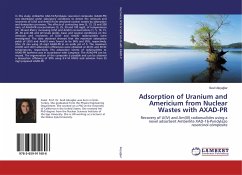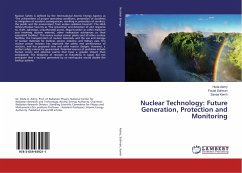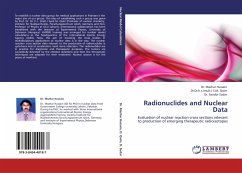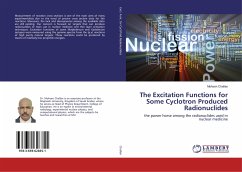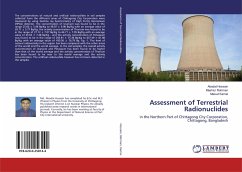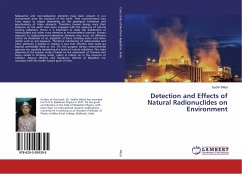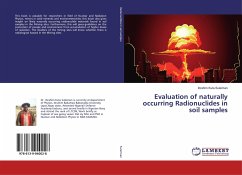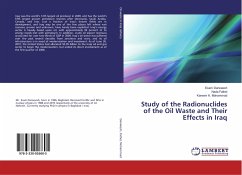In this study, Amberlite XAD-16-Pyridylazo resorcinol composite (AXAD-PR) was developed under laboratory conditions to detect the removals and recoveries of U(IV) and Am(III) from simulated nuclear wastes by adsorption and desorption processes. The effects of contacting time (5, 15, 25 and 200 min), of AXAD-PR concentrations (5, 25, 50 and 100 mg/l), of temperatures (15, 30 and 45oC), increasing U(IV) and Am(III) concentrations (1, 5, 10, 15, 20, 30 and 40) and pH levels (acidic, basic and neutral conditions) on the removals and recoveries of U(IV) and Am(III) radionuclides were investigated. The data obtained showed that the maximum adsorption yields of U(IV) and Am(III) were found to be 96% and 95%, respectively, after 25 min using 25 mg/l AXAD-PR at an acidic pH of 5. The maximum Am(III) and U(IV) adsorption efficiencies were obtained at 40 0C and 30 0C temperatures, respectively. The adsorption kinetic of radionuclides to AXAD-PR isotherm was in accordance with Langmuir. The AXAD-PR can be reused. The regeneration of the composite is possible and can be attained a desorption efficiency of 99% using 0.4 M HNO3 acid solution from 25 mg/l prepared AXAD-PR.
Bitte wählen Sie Ihr Anliegen aus.
Rechnungen
Retourenschein anfordern
Bestellstatus
Storno

